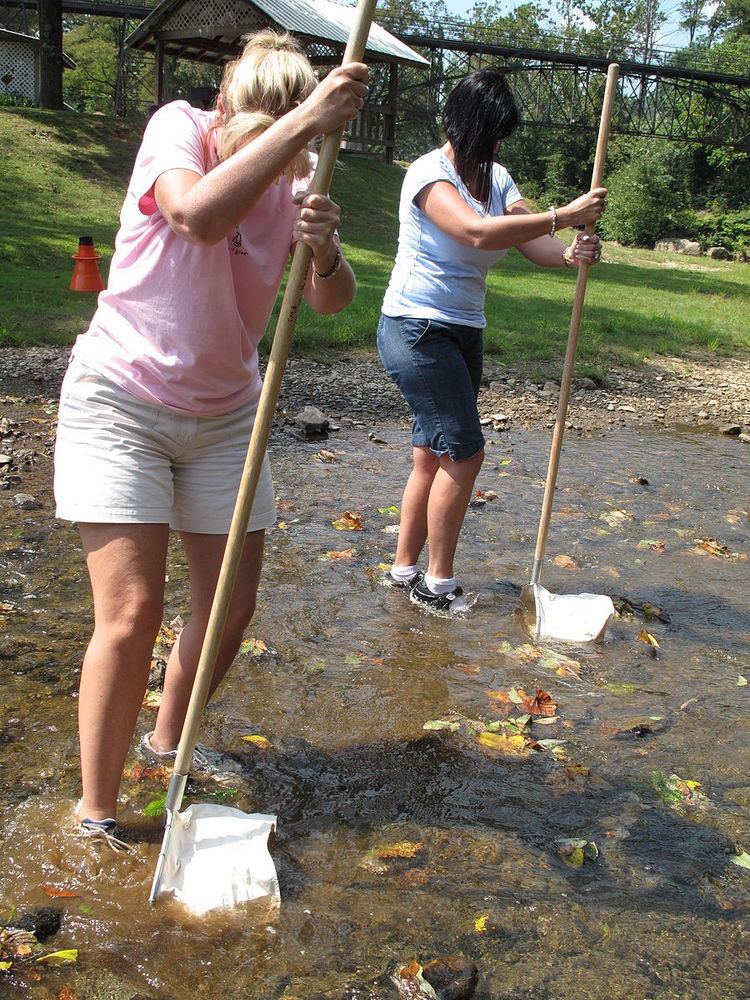 | ||
Aquatic biomonitoring is the science of inferring the ecological condition of rivers, lakes, streams, and wetlands by examining the organisms that live there. While aquatic biomonitoring is the most common form of such biomonitoring, any ecosystem can be studied in this manner.
Contents
- Why Aquatic Biomonitoring is importantedit edit source
- Mechanisms of Aquatic Biomonitioringedit edit source
- References
Biomonitoring typically takes different approaches:
Aquatic invertebrates have the longest history of use in biomonitoring programs. In typical unpolluted temperate streams of Europe and North America, certain insect taxa predominate. Mayflies (Ephemeroptera), caddisflies (Trichoptera), and stoneflies (Plecoptera) are the most common insects in these undisturbed streams. In rivers disturbed by urbanization, agriculture, forestry, and other perturbations, flies (Diptera), and especially midges (family Chironomidae) predominate. Aquatic invertebrates are responsive to climate change.
Why Aquatic Biomonitoring is important[edit | edit source]
Aquatic Biomonitoring is important in monitoring marine life and their ecosystems. Monitoring aquatic life can also be beneficial in understanding land ecosystems as well. Before there were tetrapods, there were fish. These fish then evolved into tetrapods that we see today. Because of this, aquatic life still has a major impact on life on land. Aquatic biomonitoring can represent the overall health and status of the environment, detect different environmental trends and how different stressors will affect those trends, and interpret the affect of different environmental activity will have on the overall health of the environment. Pollution and general stresses to aquatic life can have a huge impact on the environment in general. The main sources of pollution to oceans, rivers, and lakes are sewage, oil spills, land runoff, littering, ocean mining, and nuclear waste. These types of pollution cause a huge upset to marine life and can endanger any species in the water or that live close to the water. When aquatic species are affected, it causes a ripple effect. Many aquatic animals are a main food source for many land animals. For example: if a specific species of fish ingest toxins and become sick, the birds that ingest that species of fish will also become sick. Then the animal that ingest that bird will also become sick. This is a problem that can be avoided by monitoring all life and conditions in different bodies of water, including fresh and salt water.
The main draw back on aquatic biomonitoring is simplifying data and making data easier for all to understand. Taking data from monitoring sites and making it available for people to use in the health fields and other environmental fields can be a challenge.
Mechanisms of Aquatic Biomonitioring[edit | edit source]
Mechanisms that are used for Aquatic Biomonitoring are monitoring and assessing aquatic species and ecosystems, monitoring the behavior of certain aquatic species and assessing any changes in species behavior, and looking at contaminants in the water and their effect on marine life. Water is graded on several scales. One is the water’s appearance. Is the water clear, cloudy, full of algae. Next, water is graded on its chemistry levels. How much of each enzyme or mineral located in the water is extremely important. Any changes in any of these factors can change the water’s environment overall and therefore change how life in the water is. These changes can severely impact aquatic life. Certain contaminants, such as metal and certain organic waste, can cause death of some individuals and which could ultimately cause extinction to certain species. This would be detrimental to not only aquatic ecosystems, but also to some ecosystems on land as well. Extinction of any species can have a ripple effect and can cause disruption in other biomes and ecosystems.
